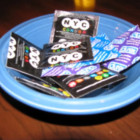
OJJDP Issues Update on Disproportionate Minority Contact
|
Last week, the Office of Juvenile Justice and Delinquency Prevention (OJJDP) released an updated fact sheet addressing disproportionate minority contact (DMC) in the nation’s juvenile justice system. The OJJDP requires states participating in its Part B Formula Grants program to collect information about the effectiveness of programs and initiatives intended to address the overrepresentation of minority young people in state juvenile justice systems. Using a five-phase DMC reduction model, the OJJDP advises states to calculate disproportionality, assess “mechanisms” contributing to DMC and develop intervention, evaluation and monitoring programs to deter delinquency and initiate systematic improvements. According to 2011 data, 41 states now have DMC subcommittees under State Advisory Groups, while 37 have either part-time or state-level personnel designated as DMC coordinators. Twenty-nine states have collected DMC data at nine contact points within their juvenile justice systems, while an additional 13 have collected DMC data from at least six contact points. Thirty-four states, the updated data indicates, have invested in “targeted local DMC reduction sites.”
Regarding intervention practices, 34 states have implemented systems improvement and delinquency prevention strategies, while 30 have either funded or received funding and/or technical assistance to implement DMC reduction programs patterned after nationally recognized models.





